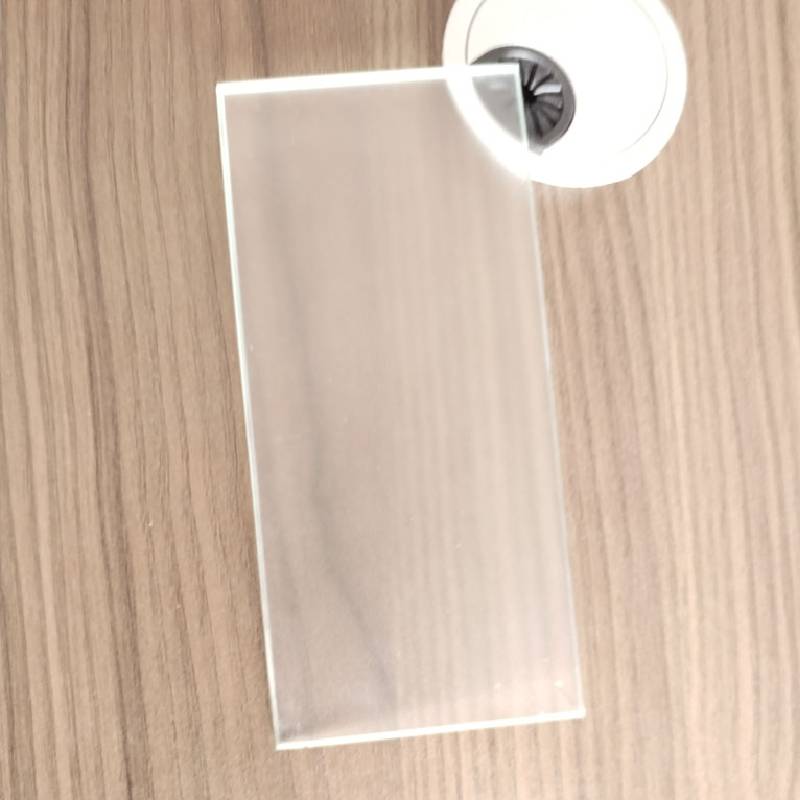Exploring the Wonders of Float Glass Examples and Applications
Float glass, a product of the glass-making process that involves floating molten glass on molten tin, has become one of the most widely used types of glass in modern architecture and design. Its unique properties of clarity, smoothness, and strength make it a preferred choice for various applications. This article explores several examples and applications of float glass, showcasing its versatility and innovation in different fields.
The Manufacturing Process
Before diving into examples, it's essential to understand how float glass is made. The process begins by melting raw materials like silica sand, soda ash, and limestone in a furnace at high temperatures. The molten glass is then poured onto a layer of molten tin, where it spreads out to form a flat, smooth surface. As the glass cools down, it solidifies, resulting in the characteristic clarity and uniform thickness of float glass.
Applications in Architecture
One of the most prominent applications of float glass is in architecture. It dramatically transforms buildings, providing aesthetic value while allowing natural light to permeate interior spaces. Large glass facades are commonly seen in commercial buildings, such as office towers and shopping centers, where floor-to-ceiling windows not only create stunning visual impacts but also enhance energy efficiency. For instance, the iconic *Apple Park* in Cupertino, California, utilizes float glass extensively in its curved glass panels, illustrating a blend of beauty and functionality.
Float Glass in Interior Design
In interior design, float glass is increasingly used due to its versatility and aesthetic appeal. It can be found in various applications, from sliding doors and room dividers to tabletops and decorative elements. High-quality float glass is often used for mirrors, as it provides a crystal-clear reflection. For example, minimalist interior designs often incorporate large mirrors made from float glass to create a sense of space and lightness.
float glass examples
Furthermore, float glass is used in bathroom designs for shower enclosures and splashbacks. Tempered float glass is particularly favored in these scenarios due to its safety features, as it shatters into small, blunt pieces rather than sharp shards when broken.
Float Glass in Automotive
Another significant application of float glass is in the automotive industry. The windshields and windows of modern vehicles are typically made from laminated float glass, which offers both clarity and safety. Laminated glass consists of two or more layers of float glass with interlayer films, providing strength, sound insulation, and UV protection. The use of float glass in automotive windows has translated into a safer driving experience and contributing to the overall aesthetics of vehicles. Notably, advanced car models have begun to use curved float glass, enhancing aerodynamic efficiency and visual appeal.
Float Glass in Furniture Design
Float glass is also gaining popularity in furniture design. Its use in coffee tables, shelves, and cabinets not only enhances the aesthetic appeal but also allows for creative designs that give a sense of lightness and space. When combined with materials like wood or metal, float glass immerses functional furniture with elegance. Designers often use tempered float glass for tabletops to ensure durability and safety, especially in households with children.
Conclusion
In summary, float glass is a remarkable material with a diverse range of applications across architecture, interior design, automotive, and furniture design. Its manufacturing process results in a product that balances aesthetic beauty with practical functionality. As technology continues to advance, the possibilities for float glass are expanding, promising innovative solutions for the future. The versatility and elegance of float glass ensure its place in modern design, paving the way for creative exploration and sustainable developments in various industries. Whether it’s shaping iconic buildings or enhancing interior spaces, float glass is indeed an indispensable material in today’s world.
 Afrikaans
Afrikaans  Albanian
Albanian  Amharic
Amharic  Arabic
Arabic  Armenian
Armenian  Azerbaijani
Azerbaijani  Basque
Basque  Belarusian
Belarusian  Bengali
Bengali  Bosnian
Bosnian  Bulgarian
Bulgarian  Catalan
Catalan  Cebuano
Cebuano  Corsican
Corsican  Croatian
Croatian  Czech
Czech  Danish
Danish  Dutch
Dutch  English
English  Esperanto
Esperanto  Estonian
Estonian  Finnish
Finnish  French
French  Frisian
Frisian  Galician
Galician  Georgian
Georgian  German
German  Greek
Greek  Gujarati
Gujarati  Haitian Creole
Haitian Creole  hausa
hausa  hawaiian
hawaiian  Hebrew
Hebrew  Hindi
Hindi  Miao
Miao  Hungarian
Hungarian  Icelandic
Icelandic  igbo
igbo  Indonesian
Indonesian  irish
irish  Italian
Italian  Japanese
Japanese  Javanese
Javanese  Kannada
Kannada  kazakh
kazakh  Khmer
Khmer  Rwandese
Rwandese  Korean
Korean  Kurdish
Kurdish  Kyrgyz
Kyrgyz  Lao
Lao  Latin
Latin  Latvian
Latvian  Lithuanian
Lithuanian  Luxembourgish
Luxembourgish  Macedonian
Macedonian  Malgashi
Malgashi  Malay
Malay  Malayalam
Malayalam  Maltese
Maltese  Maori
Maori  Marathi
Marathi  Mongolian
Mongolian  Myanmar
Myanmar  Nepali
Nepali  Norwegian
Norwegian  Norwegian
Norwegian  Occitan
Occitan  Pashto
Pashto  Persian
Persian  Polish
Polish  Portuguese
Portuguese  Punjabi
Punjabi  Romanian
Romanian  Russian
Russian  Samoan
Samoan  Scottish Gaelic
Scottish Gaelic  Serbian
Serbian  Sesotho
Sesotho  Shona
Shona  Sindhi
Sindhi  Sinhala
Sinhala  Slovak
Slovak  Slovenian
Slovenian  Somali
Somali  Spanish
Spanish  Sundanese
Sundanese  Swahili
Swahili  Swedish
Swedish  Tagalog
Tagalog  Tajik
Tajik  Tamil
Tamil  Tatar
Tatar  Telugu
Telugu  Thai
Thai  Turkish
Turkish  Turkmen
Turkmen  Ukrainian
Ukrainian  Urdu
Urdu  Uighur
Uighur  Uzbek
Uzbek  Vietnamese
Vietnamese  Welsh
Welsh  Bantu
Bantu  Yiddish
Yiddish  Yoruba
Yoruba  Zulu
Zulu 

